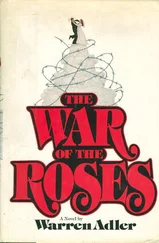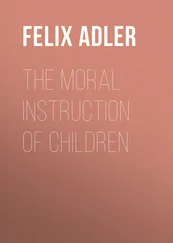“I see.…”
“There, now you understand. And that’s what you’ll be cataloging. How big the painting is with and without a frame, whether it’s painted on canvas or wood, in oil or pastels, a description of who is portrayed, be it an individual or a couple or a group, the head, from the chest up, the entire figure, straight on, in profile, the hair color, eyes, nose, mouth, chin, the approximate age; in short, the particulars you find in a passport, though you can record them more vividly and in greater detail, and then the clothing, as well as the jewelry, what’s depicted in the background, and special attributes, the condition, commentary on the type and quality of the frame, when possible the confirmation of the name of the one portrayed — in any case, the consignment number and other details that make the identification easier, or a description of the painter, whether there is a signature or it is anonymous, what year it was done or the estimated time period. By doing this, you’ll develop a catalog that will be of real use. We already have a model to follow. Frau Dr. Kulka did one up. It’s easy, in fact, but also interesting, even a pleasure, I must say, and you’ll be pleased to be able to be a part of the museum’s staff.”
“Shall I do it all right here?”
“Oh, no. You’ll get a lovely small, well-lit room on the third floor, with an office. You can set it up however you please.”
“And the paintings?”
“You will also have assistants to help you, as many as you wish. Perhaps Herr Woticky, he’s very nice. Work with the material at your own pace. As soon as I can get you a secretary, you can dictate everything onto the typewriter. Frau Dr. Kulka will explain it all to you in even greater detail. You can always ask her for advice. And, of course, I’m always here to help.”
“Many thanks! Where do the paintings go?”
“You mean after they’re cataloged? We’ve already found a solution to that. Some rooms will be emptied out — in fact, this is one of them. Here we have heaps of prayer books, ten thousand of them, and they—”
“Prayer books?”
“Yes. From all the emptied-out houses throughout the country — single-volume, three- and nine-volume editions, unfortunately many of them missing pages, though many remain just the way they were found. What can still be used in some way needs to be bundled into groups of ten or twelve and for now will be stored in the cellar. Sometimes you’ll have to supervise. We have some internees doing the work who are paid a pittance, collaborators, but seemingly harmless people who don’t like to work. That’s why you have to buck them up a little. A cigarette often works wonders.”
“So they’re also in the cellar.”
“Unfortunately. That doesn’t seem right to me, either, as the cellar is not completely dry. But the prayer books are just in the way. There’s nothing else that can be done with them. They are of use to no one.”
“No one.”
“No, no one, it’s a catastrophe. Yet we hope to mail a large shipment of them to America sometime soon, though, of course, for a trifle. That would be the best solution. We’ve already begun negotiations with members of the Committee on Reconstruction.”
“And the paintings?”
“They will be placed in the empty rooms in proper storage. We have already completed the drawings for a three-story set of wooden bays in which the paintings can comfortably be accessed and arranged by catalog number. I recommend that while cataloging them you always do so in groups, such as similar sizes, which is easy to do. The ones that give us the most trouble are the large-format paintings. But for these beasts we will perhaps build special bays.”
That reminded me. I asked if I could perhaps see one of the paintings.
“With pleasure. Just be careful, for the paintings are incredibly dusty. But you’ll soon get used to that.”
I lifted up the next average-sized painting, carefully but a bit clumsily, a coat of dust covering it that I blew away.
“There, right away you see the consignment number. That’s a help. Unfortunately, during the war they were so sloppy and didn’t always pay attention. Then we end up groping in the dark.”
I looked more closely; perhaps it was a painting from the house of someone I knew. It trembled in my fingers, the frame slipping from my hand and falling with a soft crash back onto the pile from which it had come.
“I’m sorry, I’m a bit clumsy.”
“That I see. Look, this is how you grab hold of a frame and don’t get yourself dirty.”
Herr Schnabelberger carefully lifted the painting high with hands spread out flat, yet the picture frame had loosened and the canvas fell out. I bent down to pick it up.
“That, unfortunately, happens fairly often. The paintings have not been handled right. It’s a disgrace.”
“A disgrace. Really. Sad.”
“People were overwhelmed. Also, they had no interest, always in a hurry, and you can’t expect any understanding of art from the Department of House Clearings.”
“It’s a kind of graveyard.”
“Yes, but we awaken the dead to a new life.”
“When it works.”
“That’s our task.”
Herr Schnabelberger tried with some deftness to put the painting and the frame back together. Like someone experienced in selling paintings, he told me about the quality of the painting itself.
“A lovely old grandpa. The beard tells me it’s from 1880 or so. Of course, it’s a conventional piece, a bit of bourgeois finery. The frame, this typical black-and-gold, is not worth anything. Look, it’s plaster that’s crumbling. Carved frames were too expensive, but it had to look splendid.”
The old man with his white beard bobbed before us and looked on serenely. His stiff demeanor did not ease, no matter how vigorously Herr Schnabelberger handled the painting. What happened to the old man remained distant and unknown, the eyes gazing dully and a little sleepily — so helpless, as if they wanted to be cleaned off. I took out my handkerchief in order to try to get a better look at him.
“If he were cleaned up, maybe one could recognize him.”
“You shouldn’t do that, Herr Dr. Landau. It doesn’t help the painting at all and could ruin your handkerchief. Are you really that interested in the man?”
“No, not really. But one never knows. I’ve always got my eyes open.”
“Sometimes the consignment holds the key.”
I bent down and read the number on the back.
“There’s also a name. But I can’t read it very well.”
“Here, I have a flashlight.”
“ ‘Eugene Lebenhart, Ufergasse 17.’ ”
“Someone you know?”
“No. A stranger. But is that the man in the painting?”
“No. You can see that the name and the address are in the same handwriting as the consignment number. Therefore that’s the name of the last owner of the place, who was shipped off.”
“I see, so that’s what happened!”
“Sometimes, as I told you already, not always. Usually the names and addresses weren’t noted. It’s unfortunate for us, for any clues are welcome.”
“So you assume that the painting is of a member of the Lebenhart family?”
“That’s not clear. Names are always only a hint. One can, of course, assume that it’s an ancestor of the one deported — perhaps a grandfather, maybe even a Lebenhart, but only maybe. There are too many possibilities. But, if you want to pick up the next frame, that’s no doubt the companion piece.”
It was the companion, an old woman with a brooch at her throat, the face tired, yet cheerful and carefree. I looked at the consignment. There again was the same number and “Eugene Lebenhart, Ufergasse 17.”
“That’s it! We now have the name of the last owner.”
Читать дальше












